I have an update query:-
Update PM.Contractual_Allowances Set Provider_ID = 3 Where Tenant_ID = 1 and Carrier_ID = 203
For this above query I am getting execution plan as below :
I am trying to understand that why do I get the sort operator when I dont have an ORDER BY clause and what I can do to avoid it.
Below is the plan in text (aka 'Showplan_text'):
|--Sequence
|--Index Update(OBJECT:([Ntier_Master].[PM].[Contractual_Allowances].[IX_Contractual_Allowances_Provider_ID_Tenant_ID]), SET:([Contractual_Allowance_ID1043] = [Ntier_Master].[PM].[Contractual_Allowances].[Contractual_Allowance_ID],[Provider_ID1044] = [Ntier_Master].[PM].[Contractual_Allowances].[Provider_ID],[Tenant_ID1045] = [Ntier_Master].[PM].[Contractual_Allowances].[Tenant_ID]) WITH ORDERED PREFETCH ACTION:([Act1042]))
| |--Sort(ORDER BY:([Ntier_Master].[PM].[Contractual_Allowances].[Provider_ID] ASC, [Ntier_Master].[PM].[Contractual_Allowances].[Tenant_ID] ASC, [Ntier_Master].[PM].[Contractual_Allowances].[Contractual_Allowance_ID] ASC, [Act1042] ASC))
| |--Filter(WHERE:(NOT [Expr1038]))
| |--Table Spool
| |--Split
| |--Clustered Index Update(OBJECT:([Ntier_Master].[PM].[Contractual_Allowances].[PK_Contractual_Allowances_Contractual_Allowance_ID]), SET:([Ntier_Master].[PM].[Contractual_Allowances].[Provider_ID] = [Expr1033],[Ntier_Master].[PM].[Contractual_Allowances].[Contractual_Allowance_TS] = [Expr1003]))
| |--Compute Scalar(DEFINE:([Expr1038]=[Expr1038], [Expr1039]=[Expr1039]))
| |--Compute Scalar(DEFINE:([Expr1038]=CASE WHEN [Expr1007] THEN (1) ELSE (0) END, [Expr1039]=CASE WHEN [Expr1007] THEN (1) ELSE (0) END))
| |--Compute Scalar(DEFINE:([Expr1033]=(3)))
| |--Compute Scalar(DEFINE:([Expr1007]=CASE WHEN [Ntier_Master].[PM].[Contractual_Allowances].[Provider_ID] = (3) THEN (1) ELSE (0) END))
| |--Compute Scalar(DEFINE:([Expr1003]=gettimestamp((10))))
| |--Clustered Index Scan(OBJECT:([Ntier_Master].[PM].[Contractual_Allowances].[PK_Contractual_Allowances_Contractual_Allowance_ID]), WHERE:([Ntier_Master].[PM].[Contractual_Allowances].[Tenant_ID]=(1) AND [Ntier_Master].[PM].[Contractual_Allowances].[Carrier_ID]=(203)) ORDERED FORWARD)
|--Index Update(OBJECT:([Ntier_Master].[PM].[Contractual_Allowances].[IX_Contractual_Allowances_Carrier_ID_Location_ID_Department_ID_Tenant_ID]), SET:([Contractual_Allowance_ID1046] = [Ntier_Master].[PM].[Contractual_Allowances].[Contractual_Allowance_ID],[Modifiers1047] = [Ntier_Master].[PM].[Contractual_Allowances].[Modifiers],[Carrier_ID1048] = [Ntier_Master].[PM].[Contractual_Allowances].[Carrier_ID],[Procedure_Code_ID1049] = [Ntier_Master].[PM].[Contractual_Allowances].[Procedure_Code_ID],[Location_ID1050] = [Ntier_Master].[PM].[Contractual_Allowances].[Location_ID],[Provider_ID1051] = [Ntier_Master].[PM].[Contractual_Allowances].[Provider_ID],[Department_ID1052] = [Ntier_Master].[PM].[Contractual_Allowances].[Department_ID],[Tenant_ID1053] = [Ntier_Master].[PM].[Contractual_Allowances].[Tenant_ID]) WITH ORDERED PREFETCH ACTION:([Act1042]))
|--Sort(ORDER BY:([Ntier_Master].[PM].[Contractual_Allowances].[Carrier_ID] ASC, [Ntier_Master].[PM].[Contractual_Allowances].[Location_ID] ASC, [Ntier_Master].[PM].[Contractual_Allowances].[Department_ID] ASC, [Ntier_Master].[PM].[Contractual_Allowances].[Tenant_ID] ASC, [Ntier_Master].[PM].[Contractual_Allowances].[Contractual_Allowance_ID] ASC, [Act1042] ASC))
|--Filter(WHERE:(NOT [Expr1039]))
|--Table Spool
CREATE NONCLUSTERED INDEX IX_Contractual_Allowances_Location_ID_Tenant_ID ON PM.Contractual_Allowances ( Location_ID ASC , Tenant_ID ASC ) WITH ( PAD_INDEX = OFF ,FILLFACTOR = 100 ,SORT_IN_TEMPDB = OFF , IGNORE_DUP_KEY = OFF , STATISTICS_NORECOMPUTE = OFF , DROP_EXISTING = ON , ONLINE = OFF , ALLOW_ROW_LOCKS = ON , ALLOW_PAGE_LOCKS = ON ) ON [PRIMARY ]
CREATE NONCLUSTERED INDEX IX_Contractual_Allowances_Provider_ID_Tenant_ID ON PM.Contractual_Allowances ( Provider_ID ASC , Tenant_ID ASC ) WITH ( PAD_INDEX = OFF ,FILLFACTOR = 100 ,SORT_IN_TEMPDB = OFF , IGNORE_DUP_KEY = OFF , STATISTICS_NORECOMPUTE = OFF , DROP_EXISTING = ON , ONLINE = OFF , ALLOW_ROW_LOCKS = ON , ALLOW_PAGE_LOCKS = ON ) ON [PRIMARY ]
CREATE NONCLUSTERED INDEX IX_Contractual_Allowances_Carrier_ID_Current_Effective_Date_Tenant_ID ON PM.Contractual_Allowances ( Carrier_ID ASC , Current_Effective_Date ASC , Tenant_ID ASC ) WITH ( PAD_INDEX = OFF ,FILLFACTOR = 100 ,SORT_IN_TEMPDB = OFF , IGNORE_DUP_KEY = OFF , STATISTICS_NORECOMPUTE = OFF , DROP_EXISTING = ON , ONLINE = OFF , ALLOW_ROW_LOCKS = ON , ALLOW_PAGE_LOCKS = ON ) ON [PRIMARY ]
CREATE NONCLUSTERED INDEX IX_Contractual_Allowances_Carrier_ID_Location_ID_Department_ID_Tenant_ID ON PM.Contractual_Allowances ( Carrier_ID ASC , Location_ID ASC , Department_ID ASC , Tenant_ID ASC ) INCLUDE ( Modifiers , Procedure_Code_ID , Provider_ID ) WITH ( PAD_INDEX = OFF ,FILLFACTOR = 100 ,SORT_IN_TEMPDB = OFF , IGNORE_DUP_KEY = OFF , STATISTICS_NORECOMPUTE = OFF , DROP_EXISTING = ON , ONLINE = OFF , ALLOW_ROW_LOCKS = ON , ALLOW_PAGE_LOCKS = ON ) ON [PRIMARY ]
CREATE NONCLUSTERED INDEX IX_Contractual_Allowances_Procedure_Code_ID_Tenant_ID ON PM.Contractual_Allowances ( Procedure_Code_ID ASC , Tenant_ID ASC ) WITH ( PAD_INDEX = OFF ,FILLFACTOR = 100 ,SORT_IN_TEMPDB = OFF , IGNORE_DUP_KEY = OFF , STATISTICS_NORECOMPUTE = OFF , DROP_EXISTING = ON , ONLINE = OFF , ALLOW_ROW_LOCKS = ON , ALLOW_PAGE_LOCKS = ON ) ON [PRIMARY ]



